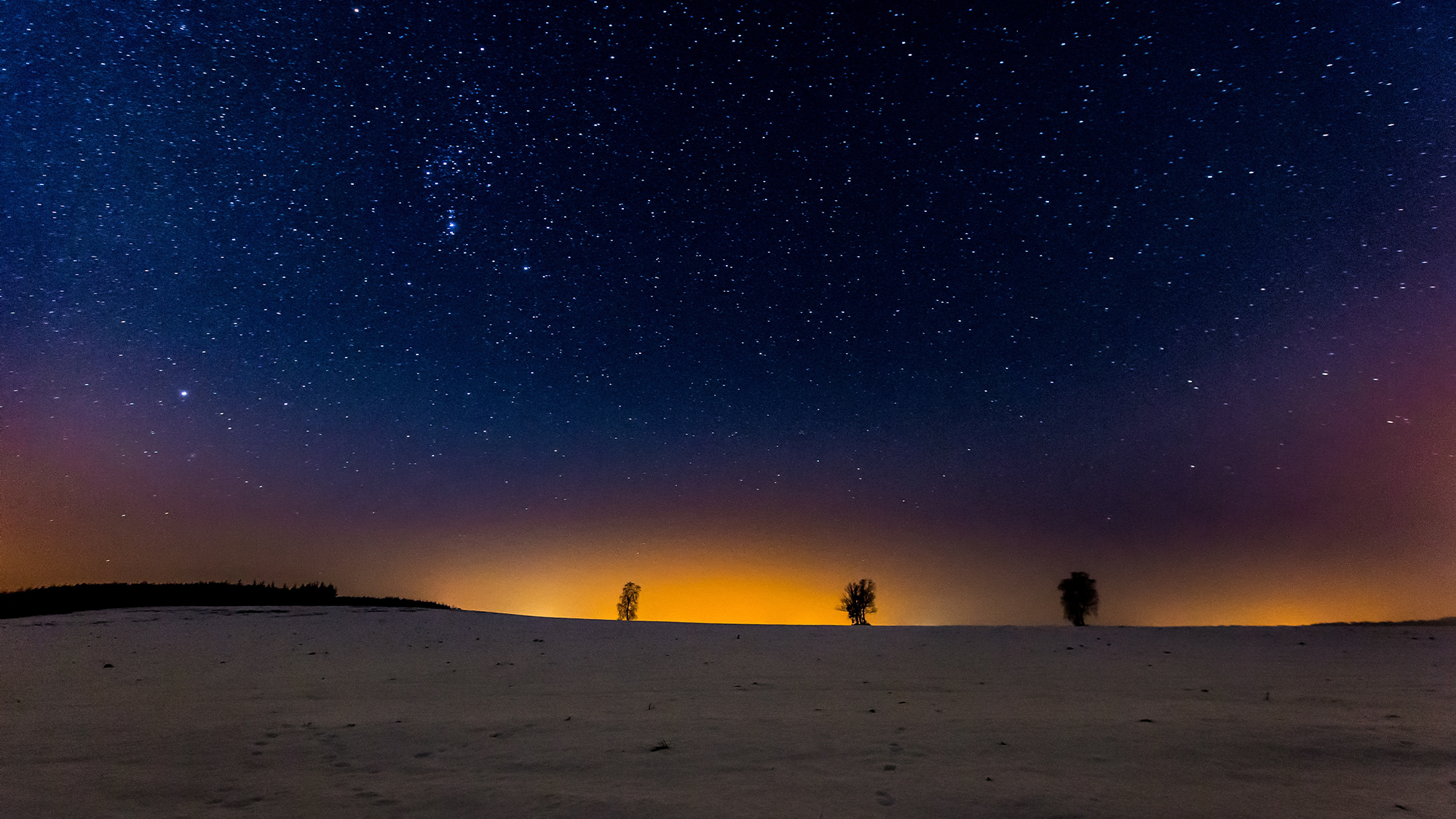

A new year means resolutions, a fresh calendar, and 365 days of skygazing ahead of us. While January’s lack of daylight in the Northern Hemisphere can be a bit depressing, the extra darkness means more time for looking up at the night sky. The cold air this time of year is also less hazy than warmer, humid summer air, making celestial bodies easier to see.
Here are some of the cosmic events to keep your eye on as you ring in 2023. If you happen to get any stellar sky photos, tag us and include #PopSkyGazers.
[Related: The world needs dark skies more than ever. Here’s why.]
January 1 – Lunar occultation of Uranus
The night sky doesn’t take a holiday. The moon will pass in front of the planet Uranus, creating a lunar occultation, which is similar to an eclipse. Uranus will disappear behind the unilluminated side of the moon and reappear from behind the illuminated side of the moon.
Lunar occultations are only visible from a small fraction of our planet’s surface, and this month’s event will be visible from parts of Europe, Canada, and parts of the United States near New York City, but during daylight hours in the Big Apple. The event will begin when Uranus disappears behind the moon at about 3:29 p.m. EST and re-appear at about 4:37 p.m. EST.
It is important to be extremely careful when pointing binoculars or telescopes at the sky when the sun is out. Even a momentary glance at the sun can cause permanent blindness.
January 3 and 4 – Quadrantids meteor shower peak
The Quadrantids, this year’s first meteor shower, typically runs between mid-November through mid-January. It’s predicted to peak early in the first few days of the month.
Under a dark sky with no moon and when the radiant point is higher in the sky, the Quadrantids can produce over 100 meteors per hour. But this year Earth’s satellite won’t be very cooperative. A bright and nearly full moon will shine almost all night, so a good bet for viewing fireballs is from late at night on January 3. Another viewing option is during the hour or so of true darkness after moonset and shortly before dawn on January 4.
[Related: Why we turn stars into constellations.]
January 6 – Full wolf moon
The first full moon of the year will rise at 6:08 p.m. EST. It is called the wolf moon in reference to the hungry packs of wolves that prowl during the winter months. Some other Native American names for January’s full moon are the Great Spirit Moon, or Gichimanidoo-giizis in Anishinaabemowin (Ojibwe) and the Someone’s Ears are Freezing Moon, or Teyakohuhtya’ks in Oneida.
This year’s event is also called a micromoon, which means that the full moon is at its farthest point from Earth (about 252,600 miles away). In astronomical terms, this is known as an apogee. It’s basically the opposite of a supermoon. The distance between Earth and our moon changes because the moon orbits Earth in an elliptical path, where one side is nearer to Earth and the other is farther away. The distance affects the moon’s size and brightness, but it’s not typically visible to the naked eye–except in cases such as this.
January 31 – Comet C/2022 E3 ZTF reaches peak brightness
Astronomers discovered this comet on March 2, 2022, using the Samuel Oschin robotic telescope, at the Zwicky Transient Facility (ZTF) on Mt. Palomar in southern California. This comet has been drawing closer to the inner solar system ever since, and it’s also getting brighter. When it comes nearest to Earth and the sun, it should be easily spotted with binoculars. It is predicted to be in the direction of the constellation Corona Borealis, which is currently visible for a few hours after sunset and then rises a few hours before the sun. Its brightness will continue to increase into the month of February.
The same skygazing rules that apply to pretty much all space-watching activities are key this month: Go to a dark spot away from the lights of a city or town and let the eyes adjust to the darkness for about a half an hour.
